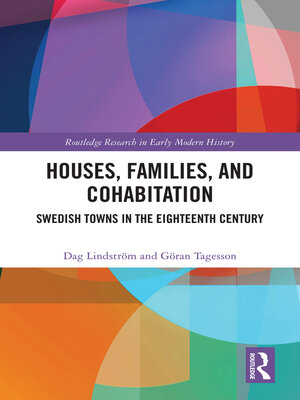Houses, Families, and Cohabitation
ebook ∣ Swedish Towns in the Eighteenth Century · Routledge Research in Early Modern History
By Dag Lindström

Sign up to save your library
With an OverDrive account, you can save your favorite libraries for at-a-glance information about availability. Find out more about OverDrive accounts.
Find this title in Libby, the library reading app by OverDrive.



Search for a digital library with this title
Title found at these libraries:
| Library Name | Distance |
|---|---|
| Loading... |
This book is an interdisciplinary study that draws on a combination of archaeological evidence, building archaeological analysis, archival sources to explore the dynamic relations between dwelling houses, social organization of households, and patterns of cohabitation during the eighteenth century.
The empirical focus of this book is on Swedish towns, but it also addresses more general issues about urbanity and urban life, space and social organization, and materiality and individual agency. Aggregated questions about urban life and urban space are combined with a micro historical method revealing aspects of daily life and urban change. This study unveils a previously neglected history. Swedish eighteenth century towns have commonly been identified as a territory characterized by its sleepy absence of change. This study proves the opposite. Houses were built larger, with more diverse and complex inner structures. Family structures changed; households generally became smaller, the share of households headed by a married couple declined, and the number of single households increased. Population density increased, the number of families residing in the same house increased, and rental accommodation became more prevalent.
This volume is essential reading for anyone interested in early modern housing, urban change, and interdisciplinary methods.







